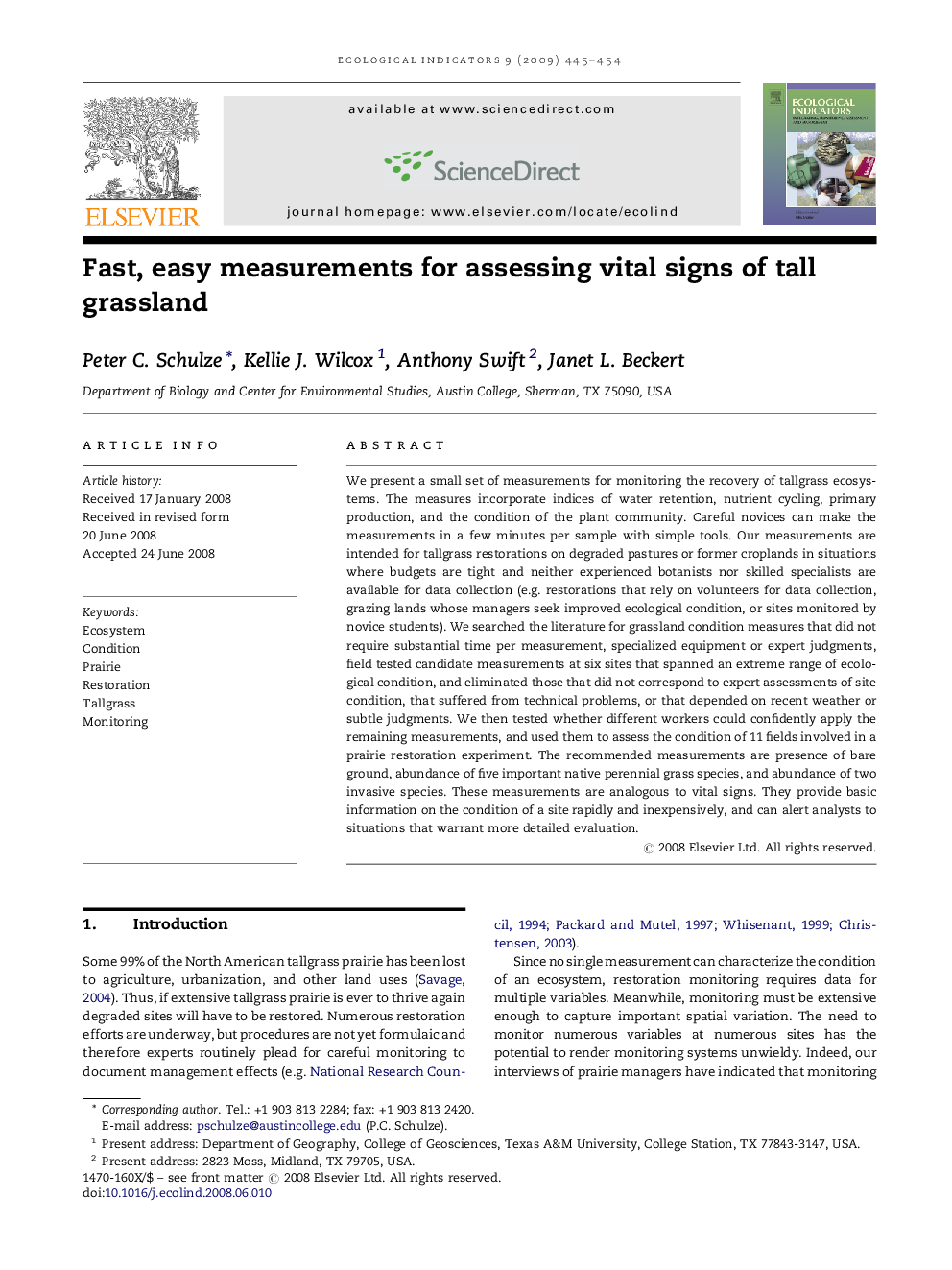| Article ID | Journal | Published Year | Pages | File Type |
|---|---|---|---|---|
| 4374464 | Ecological Indicators | 2009 | 10 Pages |
Abstract
We present a small set of measurements for monitoring the recovery of tallgrass ecosystems. The measures incorporate indices of water retention, nutrient cycling, primary production, and the condition of the plant community. Careful novices can make the measurements in a few minutes per sample with simple tools. Our measurements are intended for tallgrass restorations on degraded pastures or former croplands in situations where budgets are tight and neither experienced botanists nor skilled specialists are available for data collection (e.g. restorations that rely on volunteers for data collection, grazing lands whose managers seek improved ecological condition, or sites monitored by novice students). We searched the literature for grassland condition measures that did not require substantial time per measurement, specialized equipment or expert judgments, field tested candidate measurements at six sites that spanned an extreme range of ecological condition, and eliminated those that did not correspond to expert assessments of site condition, that suffered from technical problems, or that depended on recent weather or subtle judgments. We then tested whether different workers could confidently apply the remaining measurements, and used them to assess the condition of 11 fields involved in a prairie restoration experiment. The recommended measurements are presence of bare ground, abundance of five important native perennial grass species, and abundance of two invasive species. These measurements are analogous to vital signs. They provide basic information on the condition of a site rapidly and inexpensively, and can alert analysts to situations that warrant more detailed evaluation.
Related Topics
Life Sciences
Agricultural and Biological Sciences
Ecology, Evolution, Behavior and Systematics
Authors
Peter C. Schulze, Kellie J. Wilcox, Anthony Swift, Janet L. Beckert,
